NITRO AND RAYMOND CITY CIRCA 1918 TO THE 50S
While most people don't equate Nitro with Raymond
City, I believe there was once a connection.
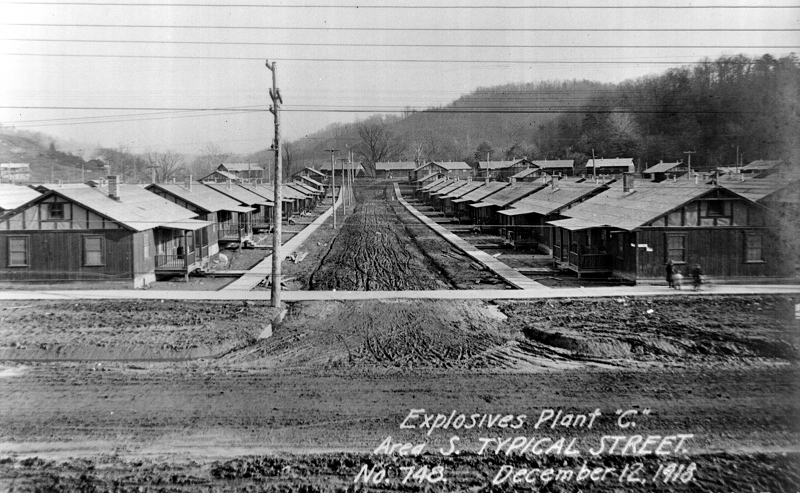
See a large image of the above photo HERE
It's often assumed the town of Nitro
is named after nitroglycerin, but Nitro's name can be traced back
to its origins as a World War I facility to make nitrocellulose, which
is used to manufacture gunpowder. The government chose the area
that is now Nitro for one of three new explosives plants after the
United States entered the war. The plants were built to relieve a
severe shortage of gunpowder. Even though construction at Nitro had
begun the week before, official groundbreaking ceremonies for the
plant were held January 2, 1918. It took just 11 months for workers
to build the plant. |
See a very large photo of the Nitro plant
HERE
And also see a very large photo
of the early housing on 21st Street HERE.
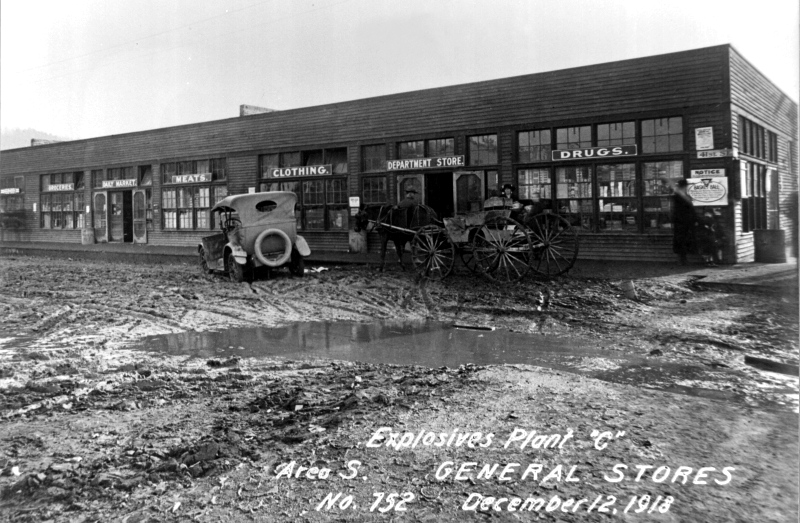
Everything had to be provided, as there
was nothing here in the beginning. This great photo shows at
least 6 people trying to stay out of the mud. The old car and
horse and buggy was the turning point in technology.
See a large photo HERE
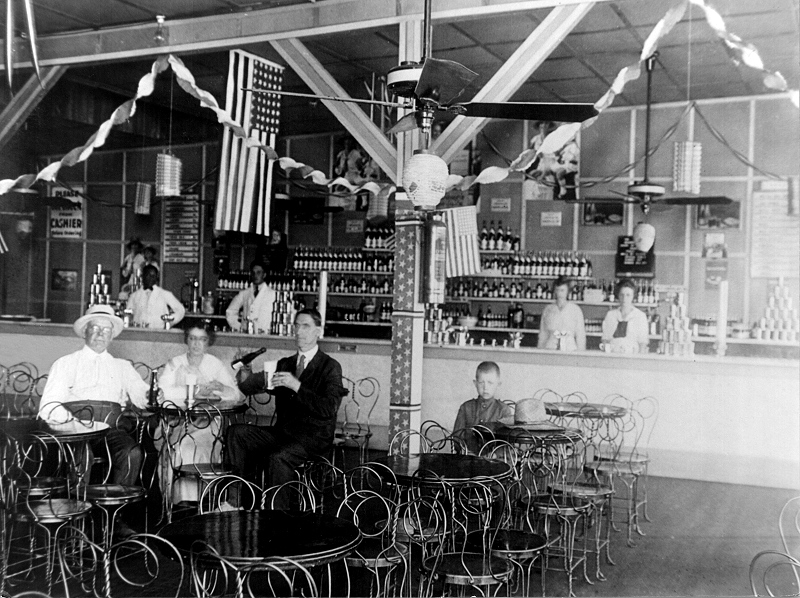
Inside a Nitro establishment of the day.
There were 110,000 total people on the payroll. But the average only
stayed about 6 weeks. There was terrific turnover. The most that was
ever working in Nitro at one time was about 30,000. Clark Gable, who
was to become a major Hollywood movie star, was one of them.
See a large photo HERE
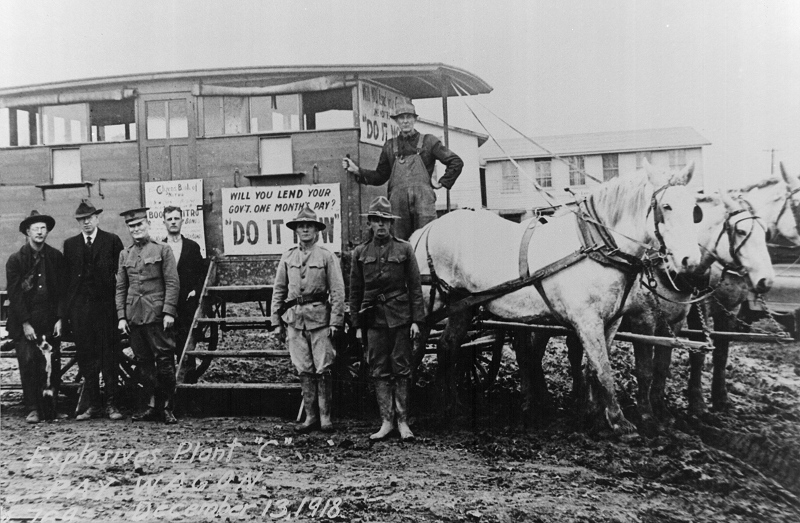
A rolling fund drive for the war effort
in Nitro.
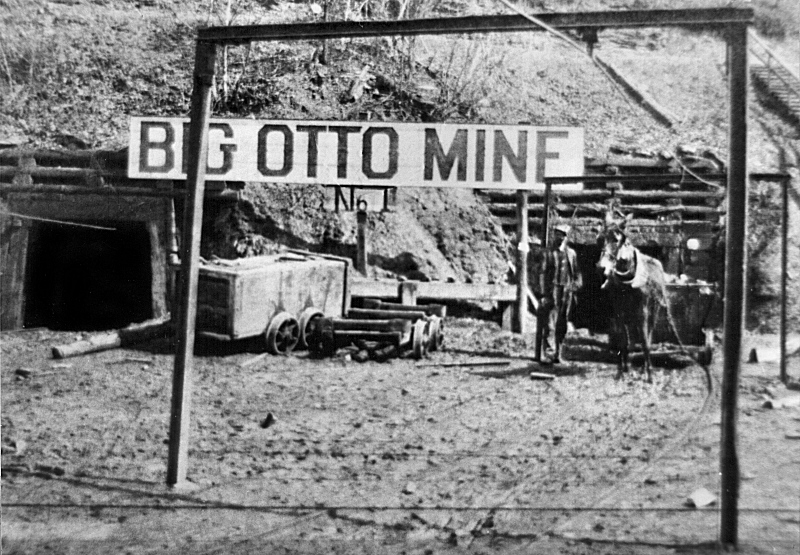
While not in Nitro proper, this photo
was included in the batch of photos discovered. I have a feeling
that this mine was a main contributor to the Nitro effort. The
Big Otto Mine was owned by the Otto Marmet Coal and Mining Company
in Raymond City. From the WV Dept of Mines comes the
following report in 1907:
This is a drift mine located on
Harmon's Creek, five miles east of Raymond City, on a short line railroad
to the K. & M. Railroad and the river tipple. The Pittsburg Seam
of coal is operated which has a thickness of five and a half feet
with a slate roof of a dangerous character, but the miners are well
supplied with timber and the mine Is properly timbered. The developments
are on the double entry system ventilated by an eight-foot Thayer
fan which gives fair results. Cross cuts between entries and rooms
are regularly driven; mine doors and stoppings in fair condition.
Oil used for illuminating purposes is of a fair quality. All powder
is taken into the mine in five pound flasks. The management has recently
built a powder magazine and furnished two metallic flasks for each
miner. At the end of each day's work the empty flasks are left at
the magazine where a man is employed to fill them and give out the
full flasks each morning. The second opening meets with the requirements
of law. Rules are posted at the mine: safety lamp and stretchers kept
at hand. EDWARD SCHONEBAUM, Supt. ANDREW ITTT, Mine Boss. |
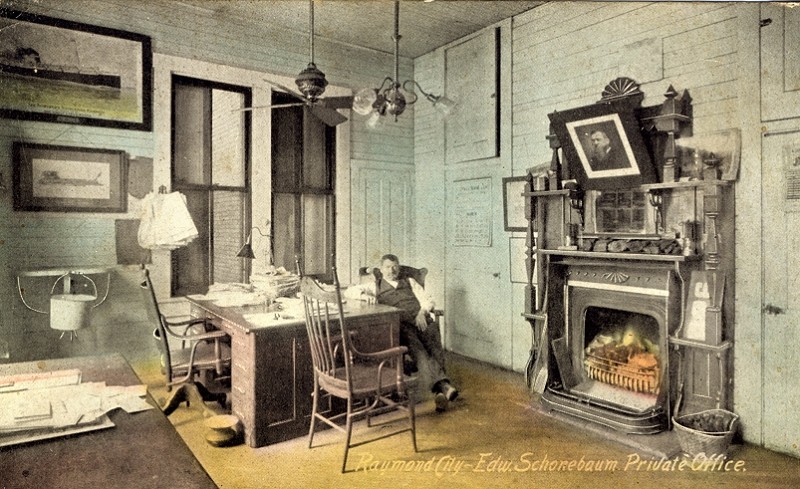
Edwin Shonebaum in his office in Raymond
City
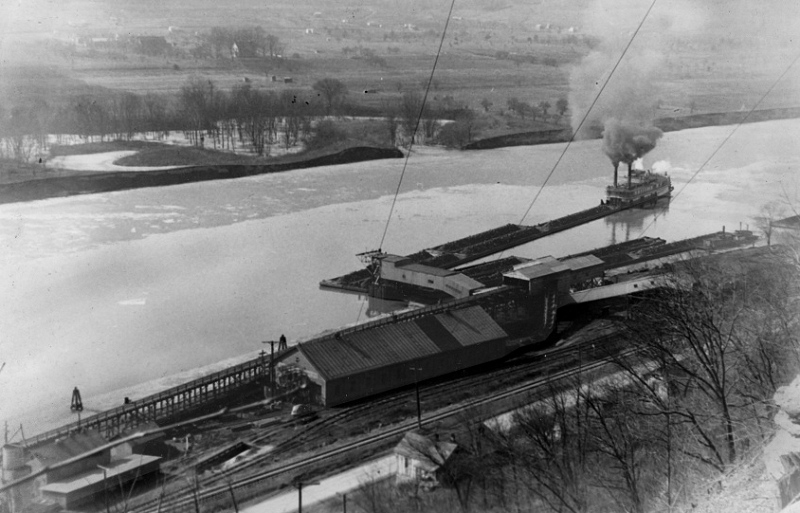
The huge coal dock at Raymond City,
about where the boat launch is today.
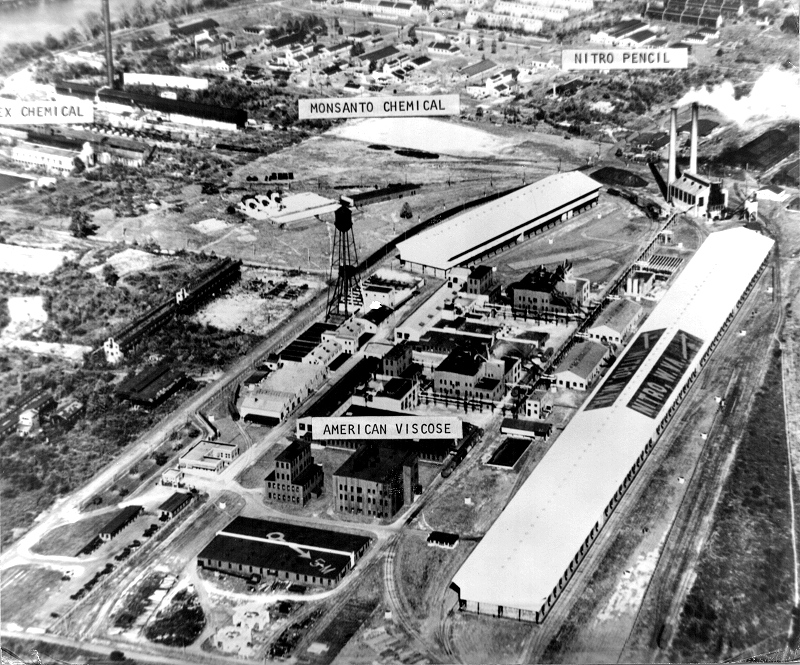
The explosives plant was not completed
in time to help the war effort. The facilities were sold at auction
and Nitro eventually became the center of one of the most productive
chemical industries in the world.
See a large photo HERE
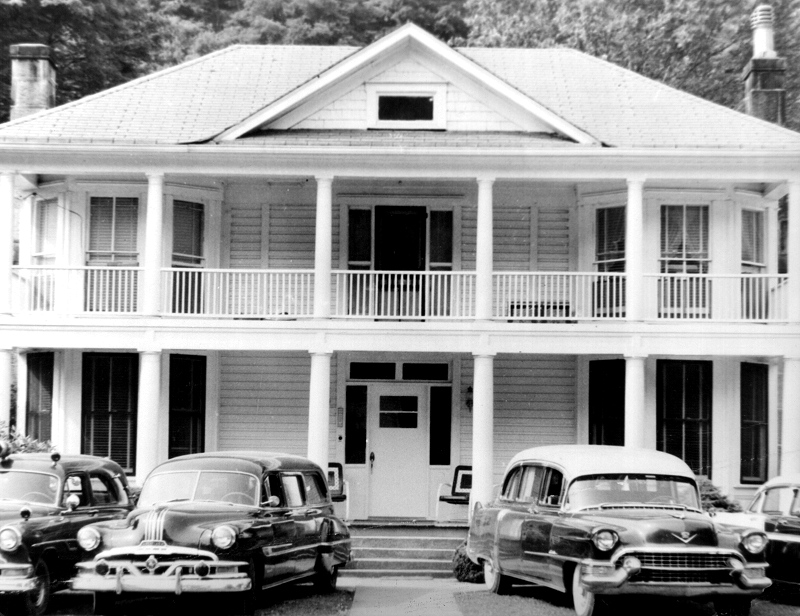
This appears to be the Cooke Funeral Home in Nitro
in the 50s. Still looking for positive identification.
Nitro photos courtesy of Melody McCormick

Back to Index









